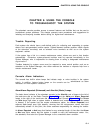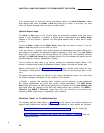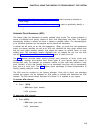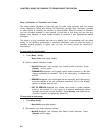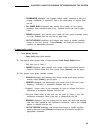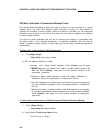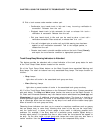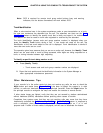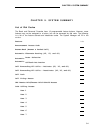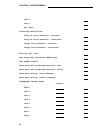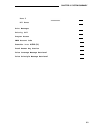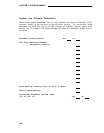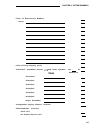
CHAPTER 8. USING THE CONSOLE TO TROUBLESHOOT THE SYSTEM
Note: DCS is required for remote trunk group select buttons busy and warning
indicators, but the buttons themselves will work without DCS.
Trunk Identification
When a voice terminal user in the system experiences noise or poor transmission on a trunk,
the user can conference the attendant into the call. The attendant can then use the Trunk
Identification feature to identify the specific trunk that is faulty and report it for maintenance.
The feature can also be used on trunk calls originated or received by the attendant.
The trunk identification (access code and group member number) is displayed when you
press the Identify Trunk button during a call. If two trunks are used on the call, the
identification of the last trunk added to the call is displayed. Trunk Identification is denied if
more than two trunks are on a call.
The operation given here assumes that you are on an active call; however, the Identify Trunk
button can be used while a trunk is being accessed, while digits are being outpulsed on a
trunk, or during intervals between digit outpulsing.
To identify a specific trunk being used on a call:
1.
Press
(Identify Trunk).
• Trunk access code and trunk group member number are displayed.
2.
Report the trunk problem and the identification information to the System Manager or
other appropriate maintenance personnel.
Other Maintenance Tips
If your console is in the active mode but does not receive any calls, be sure to check the
Night button and status lamp (Figure 2-10). If the lamp is lighted, the system is in night
service; no calls can terminate on day-only or principal consoles. Press the Night button on
the principal console to extinguish the lamp and restore the console to normal service.
If other status lamps are lighted, verify that they are not caused by stations administered
without hardware (AWOH) translations before pursuing other causes of trouble.
Complaints from system users that they are not receiving calls may mean that they have
inadvertently activated the Call Forwarding All Calls or Send All Calls feature. In response to
such a complaint, place a call to the terminal; check your display for an “f” or “s” call
purpose code. If either of these codes is displayed, tell the user to deactivate the feature.
8-9



